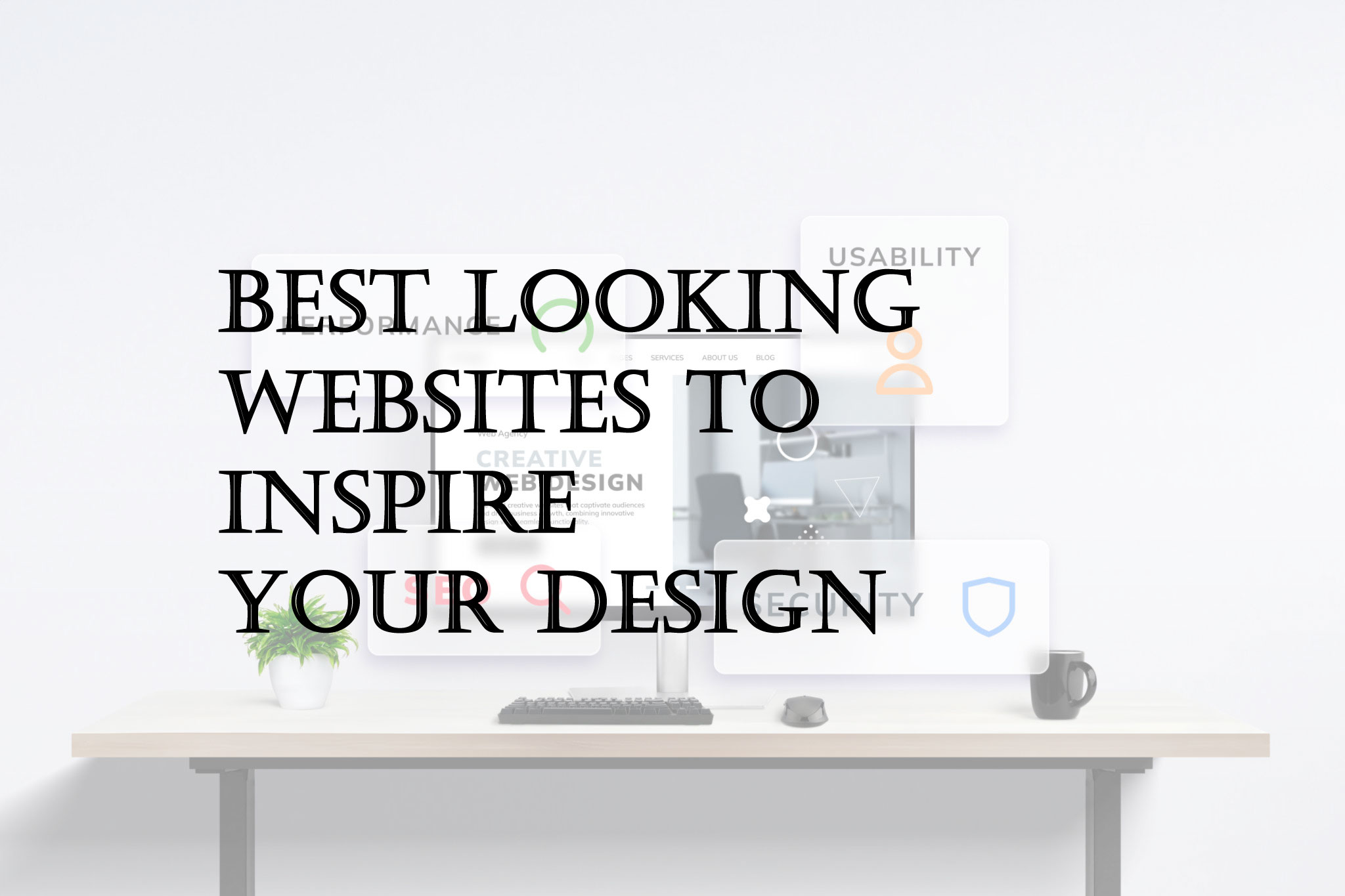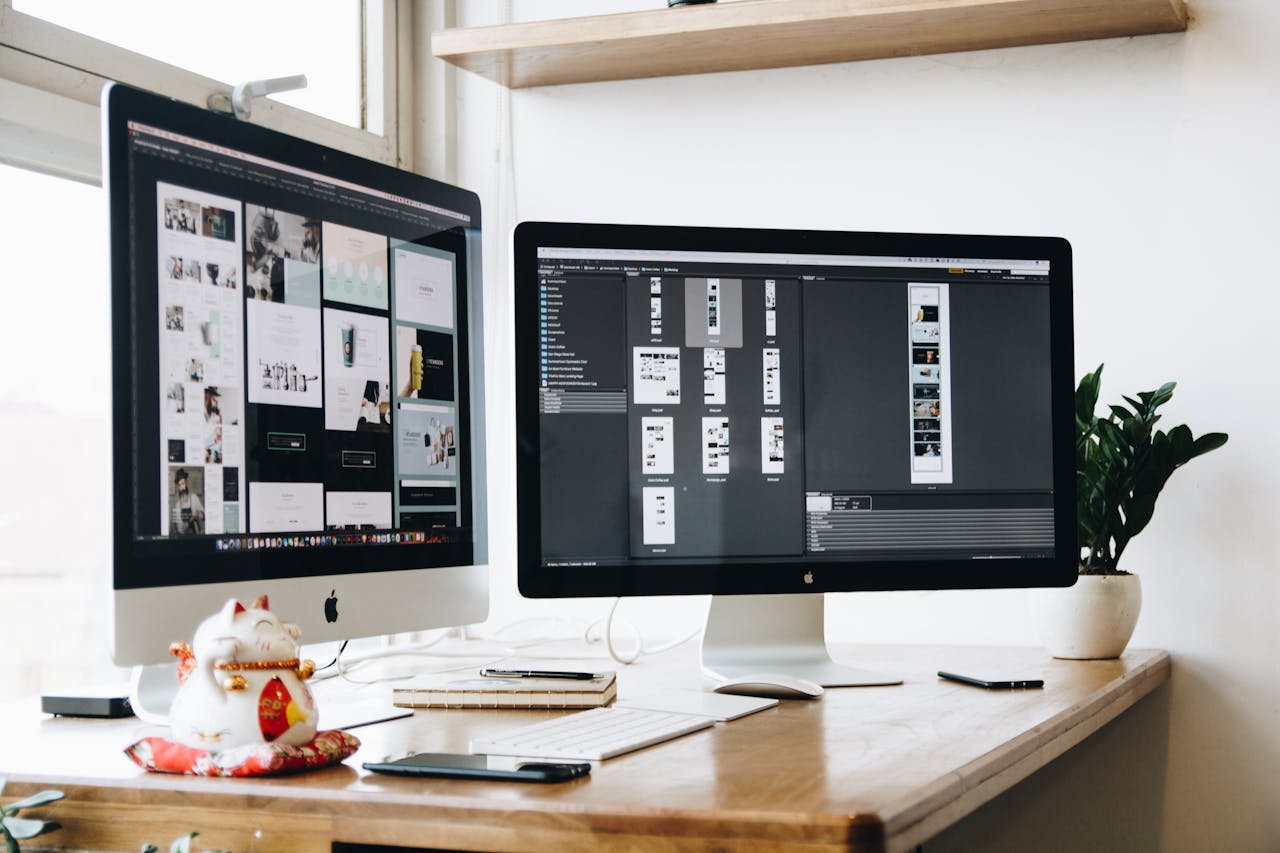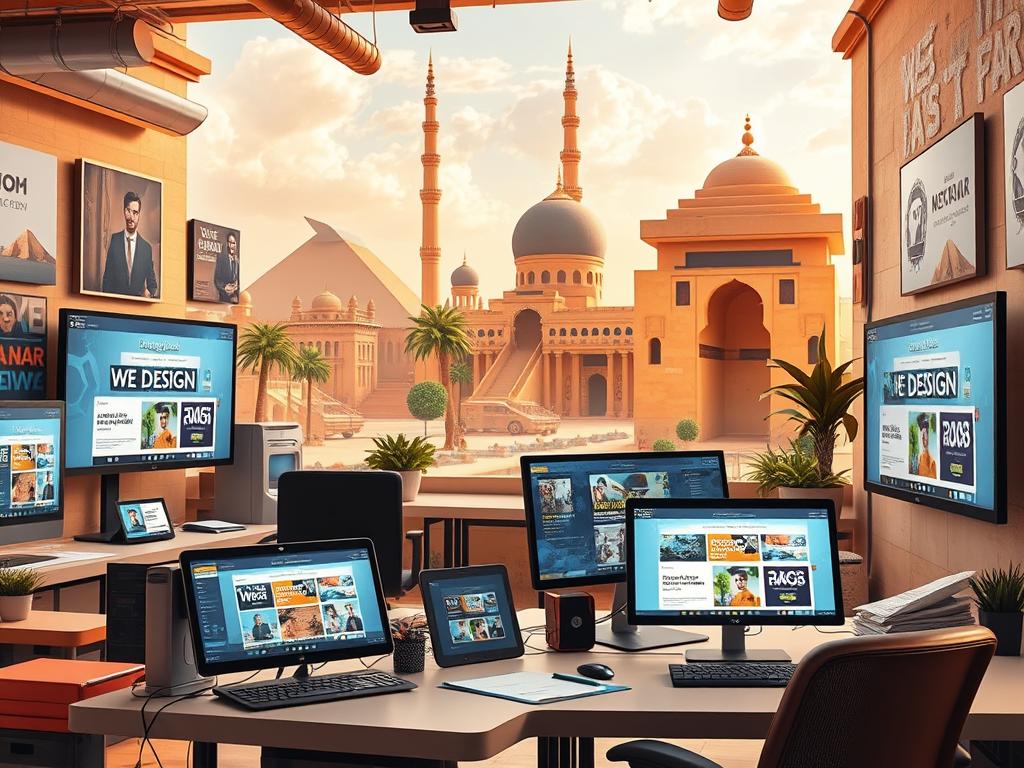Looking for the best websites of 2022? This year, we’ve seen amazing designs that grab your attention and make using them a joy. Sites like Awwwards and The Webby Awards have highlighted some of the most creative and technically impressive designs.
One big trend in 2022 is mixing minimalism with bold art. “Hyer” and “Mubasic” are great examples. They show how simple designs can be powerful when paired with eye-catching visuals. “Digital Cover” also stands out for its use of parallax scrolling and animation, keeping users hooked.
Almost 60% of users love websites that look good. Sites like Buzzworthy Studio and Pollen use full-width layouts and interactive features to improve the user experience. Active Theory’s portfolio, with its “Blade Runner-ish” look, shows a trend towards themed designs.
In this article, we’ll look at 12 websites that are perfect for design inspiration in 2022. Whether you’re into unique typography, cool animations, or strong branding, these sites have something for everyone. Let’s dive into the innovative features and creative approaches that make 2022’s web designs stand out.
Overview of Design Trends in 2022
In 2022, the digital design world saw a big leap in new trends. These trends pushed the limits of what’s possible in creativity and function.
Emphasis on Minimalism
Minimalistic design was a big hit in 2022. It focuses on clean, simple layouts. This makes it easier for users to focus and enjoy their experience.
By removing extra stuff, minimalistic design lets content shine. This makes websites more usable and look better too.
Use of Bold Typography
Bold typography became a key trend in 2022. It brought back big, bold fonts that grab your eye. These fonts are used in headlines and calls to action to make messages stand out.
This trend is changing how brands communicate. It helps brands show their identity in a bold and clear way.
Integration of 3D Elements
3D elements in design became very popular in 2022. They add depth and make websites more engaging. This is great for e-commerce sites, where they can show products from different sides.
This trend is expected to grow. More websites will use 3D elements to create exciting and immersive online spaces.
The Importance of Visual Aesthetics
Visual aesthetics greatly affect a website’s success. They guide how users interact and perceive a site from the start. Good design attracts and keeps users, improving their experience. This is key for businesses wanting to increase sales and build a strong brand.
User Engagement and Retention
First impressions of a website are often based on its looks. Studies show 94% of first impressions are about design. Websites with great visuals can boost engagement by over 60%.
Good design makes users want to stay longer, reducing bounce rates. Color choices can draw in 39% of users, showing the importance of colors in keeping interest.
Influence on Brand Perception
A website’s look greatly affects how people see a brand. About 75% of website trust comes from its design. A good look builds trust and reliability, essential for brand loyalty.
67% of buyers consider a website’s appearance when deciding to buy. Consistent design across all platforms also boosts brand perception.
Enhancing User Experience
A well-designed website does more than look good. It makes it easy to navigate and interact. Good design can make users overlook small usability issues.
For example, video backgrounds can increase sales by 138%. Clean, simple designs are preferred by 84.6% of users. It’s important to mix simplicity with elegance in website design.
Top Websites with Stunning Visuals
In 2022, many websites caught the eye of designers and users with their amazing visuals. They mixed technology and creativity to shine online. We’ll look at three sites with stunning visuals, new designs, eye-catching colors, and unique layouts.
Website 1: Innovative Design Features
Anrok’s website is known for its smart use of white space. This makes it clear and easy to focus. It also uses cool hover actions and interactive shapes, blending tech and design well.
Website 2: Captivating Color Schemes
Discord Blog shows the power of bright colors and graphics. It grabs attention, even in specific markets like engineering. The use of two-toned text and auto-play videos adds to the immersive feel.
Website 3: Unique Layouts
Polygram’s design is special because it’s responsive and interactive. AndDan’s site uses curiosity to engage users. This shows how creative navigation can make a difference. Jane Cooper’s team focuses on custom layouts for better user experiences.
Mobile Responsiveness in Design
In today’s world, having a mobile-friendly website is a must. Over 66% of web traffic comes from mobiles as of March 2022. A responsive website can reach more people and open new doors for your business. Many themes and templates now focus on being mobile-friendly, making sure everyone has a great experience.
Importance of Mobile-First Design
Web designers now focus on mobile-first design. This means making sure websites work well on small screens first. Then, they make sure they look good on bigger screens too.
Responsive design is key for good SEO, better conversion rates, and a better user experience. Google started using mobile-first indexing in 2019. This means they rank mobile-friendly content higher. For mobile, it’s best to use a font size of 16 pixels, compared to 14 pixels on desktops.
Examples of Mobile-Friendly Websites
Many websites are great examples of mobile-friendly design. MA True Cannabis and Nixon’s website are both easy to use on phones and tablets. Red Edition and The Scott Resort use modern designs that work well on all devices.
Ceremony Coffee’s website works well on both desktops and mobiles. Seven Hills Wholefoods has a cool horizontal scrolling feature on its homepage. Kern’s design is all about making things easy to use on any device.
Maradji uses fun animations that work on all platforms. Today, almost all websites are designed to be responsive. This shows how important mobile-first design is for reaching today’s audience.
The Role of Color Theory in Web Design
In the digital world, color theory web design is key to how users feel and interact. Designers use colors to make websites that grab attention and stir emotions.
Color Palettes That Work
Choosing the right effective color palettes is essential for good web design. The color wheel has 12 colors, with different schemes like monochrome and complementary. For example, using different shades of one color creates a unified look.
Complementary colors, like blue and orange, stand out because they’re opposite each other on the wheel. This contrast makes them vibrant.
Take Coca-Cola’s red, which means energy and passion. Apple uses white and gray for simplicity and innovation. A white background with dark text makes text easier to read, showing color theory’s value.
Impact of Colors on User Emotions
Knowing how colors affect emotions is vital for a good user experience. Blue, like Facebook’s, makes people feel calm and trustworthy. Red, as seen in Netflix, creates a sense of urgency and excitement.
Colors also carry cultural meanings. White means purity in the West but mourning in the East. Starbucks uses green to show freshness and ethics, boosting their brand.
In summary, using color theory web design makes websites more appealing and influences how users feel and see brands. By picking the right effective color palettes and understanding the emotional impact of colors, a website can go from good to great.
Typography: The Soul of Web Design
Typography is key in web design, affecting how easy it is to read and what users think. Choosing the right fonts can make a big difference. It’s important to pick fonts that work well together to improve the user experience.
Choosing Fonts Wisely
Choosing the right font is critical in web design. The choice between serif and sans-serif fonts can change how a site looks and feels. Research shows that 90% of first impressions on websites are based on font style and design.
A well-designed site can boost user engagement by up to 70%. This shows how important it is to pick fonts that match the audience. Also, using custom fonts, as over 60% of designers do, can make a brand stand out and offer a unique experience.
Combining Fonts for Impact
Using different fonts together is another important part of typography in web design. Mixing fonts can create a clear order in content, making it easier for users to follow. The right mix of fonts can also make text easier to read and improve user happiness.
Adjusting line height can make text 20% easier to read, which can lower bounce rates. Mistakes in typography can lead to a 35% increase in users leaving a site. This shows how careful we need to be with font choices.
Using responsive typography can make content 50% more memorable on mobile devices. This makes for better interaction with users. As mentioned in this article, using modern web tech and responsive design ensures a great experience for users.
In summary, typography in web design is more than just looks. It’s about creating a harmonious and engaging experience for users. Choosing and combining fonts wisely is essential for a well-designed site.
Imagery and Graphics in Modern Design
Imagery in web design is a key tool for making websites look good and engaging. High-quality images can boost engagement by 94%. They play a big role in how users feel about a site.
Images make websites look better and help users understand and remember information. This is why they’re so important.
Best Practices for Using Images
Using images well is key to their success. Make sure images are high resolution and load quickly. This helps keep users on your site longer.
Responsive images are also important. They work well on all devices, which is good for the 52% of web traffic from mobiles. Don’t forget to add alt text for accessibility and SEO.
Custom graphics can also guide users through your site. They make the experience better and more memorable.
The Rise of Custom Graphics
Custom graphics are becoming more popular for unique web designs. They help create a brand that stands out, leading to 25% more brand loyalty. AI tools make creating these graphics faster and easier.
Using diverse visual elements is also important. This includes different races, ethnicities, genders, abilities, and body types. Tools like Google’s emoji library help make websites more inclusive.
Using imagery well, following best practices, and creating custom graphics are essential for modern websites. They make websites more appealing, engaging, and help build a strong brand.
User Experience (UX) and User Interface (UI)
In web design, user experience design and user interface design are key. They make websites look good and work well. This makes users happy and keeps them coming back.
Defining UX and UI
User experience design (UX) is about how users feel when they use a product. It makes things easy to use and fun. User interface design (UI) is about the parts users see and touch, like buttons and text.
Both UX and UI are important in making a website. They work together to create a great user experience.
How They Impact Design Choices
Knowing how user experience design and user interface design affect websites is key. Adding 3D elements can make websites more engaging. AI can also make websites more personal for each user.
Using text and emojis in UI in web design helps people connect. It makes websites easier to read and more fun. Adding cool effects to text can make it more interesting.
Using blur effects can make websites look better. Bento grids help websites look good on all devices. Modern designs mix old and new to make websites more interactive.
UI design has changed a lot over time. It went from very realistic to simple designs. This shows how important it is for designers to keep up with trends.
Case Studies of Exceptional Websites
We explore three top website designs from 2022 in this section. Each study dives into design elements, user interface, and strategies for better user engagement and business goals.
Analysis of Website 1: Hidden Heroes Project
The Hidden Heroes Project hit 10 million readers, showing the power of great website design. They got 1,000 unique visits a day, keeping users hooked. Their use of eye-catching visuals and easy navigation played a big role in their success.
Analysis of Website 2: Powermeals
Powermeals saw big wins with their website redesign. They cut bugs to almost none and sped up their site from nine to two seconds. A new script helped automate 95% of orders, boosting user happiness.
Analysis of Website 3: Dropbox
Dropbox’s new design, with a left navigation bar, supported their Dropbox AI launch. Launched in June 2023, Dropbox AI helped answer user questions. Their design changes show Dropbox’s dedication to better user experiences.
These case studies offer insights into creating top-notch websites. They highlight how good design boosts user engagement and business success.
The Future of Web Design: Trends to Watch
As we look ahead to 2023, web design is changing fast. To stay ahead, we need to know about new trends and technologies. We’ll explore some key trends and technologies that will shape the future of web design.
Predictions for 2023
In 2023, designs will focus more on being user-friendly. This will help keep users engaged. With more people using mobile devices, making websites mobile-friendly is key.
Minimalist designs are also becoming popular. Over 50% of top websites use this style to improve user experience. A website’s look matters a lot, with 70% of users judging it in the first 5 seconds.
Adding videos to homepages is another trend. It can make users stay longer, up to 80%. Fast websites are also important, with tools like WP Rocket helping to speed up pages.
Emerging Technologies to Consider
Several new technologies will shape web design. For example, animations and transitions can grab attention, with an 80% success rate. Parallax scrolling can also keep users longer, by 20%.
Advanced UX/UI design will become more common. Companies focusing on user experience can see big returns. AI and ML will help make designs more personal and adaptable.
Ensuring websites work well on mobile devices is critical. With 94% of first impressions being design-related, tools like Wix and Squarespace are essential. They offer many templates and customization options.
To keep up with web design trends, knowing about 2023 predictions and new technologies is key. Using these insights will improve functionality and user experience. It will also help brands succeed in the digital world.
Tools and Resources for Designers
In the world of web design, having the right tools is key. This section will explore popular design software and designer communities. These resources help create engaging and easy-to-use websites.
Popular Design Software
Choosing the right design software is important. Adobe Dreamweaver offers coding hints and GitHub support for a 30-day free trial. Figma supports team work with auto layout and template libraries, starting at $15 a month.
Canva has a huge library of templates and is easy to use, starting at $15 a month. Sketch offers a 30-day free trial and starts at $10 a month, but only for Mac.
WordPress is used by about 43% of all websites. It starts at $4 a month with a free version. Webflow also offers custom code, starting at $14 a month, with a free version.
Shopify is great for e-commerce, starting at $29 a month. Google Web Designer is free and helps create HTML5 content.
Online Communities and Inspiration Sources
Designer communities are full of resources and inspiration. Behance is a place for creatives to show their work. Stack Overflow has over 18 million coding questions and answers, helping both developers and designers.
GitHub is the top platform for version control, essential for coding projects. Unsplash and Pexels offer free images and videos to improve web design.
These communities and tools help designers work more efficiently. They make it easier to create beautiful, functional, and user-friendly websites.
Conclusion and Key Takeaways
Effective design best practices are essential for creating websites that look good and work well. This includes using minimalistic design, bold typography, and 3D elements. It’s important to keep up with the latest trends.
Recap of Best Practices
We’ve talked about several key strategies in this article. Visual aesthetics are very important. Websites that look good can make a strong impression, improve user experience, and increase engagement.
Mobile responsiveness is also critical. It makes sure your site works on all devices. This follows the mobile-first design principle.
Color theory is another important aspect of web design. The right colors can make users feel certain emotions and keep them interested. Using images and graphics wisely can also make your website more appealing.
User experience (UX) and user interface (UI) are vital for web design. A smooth and easy-to-use interface can make users happy and keep them coming back. Designers can use various tools and resources to improve their work and meet professional standards.
In summary, to create effective web designs, stay updated on trends, focus on mobile responsiveness, use color theory wisely, and prioritize UX and UI. These tips will help you create websites that are both beautiful and functional in 2022 and beyond.


